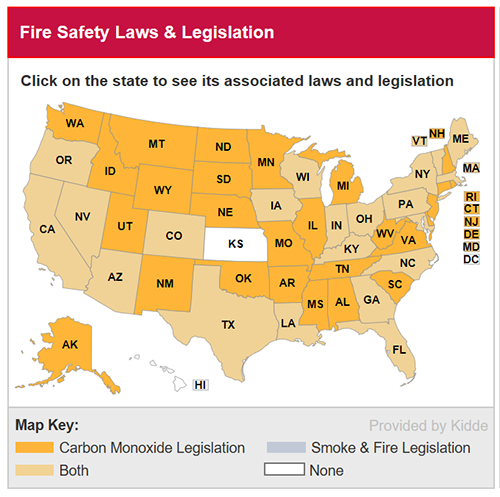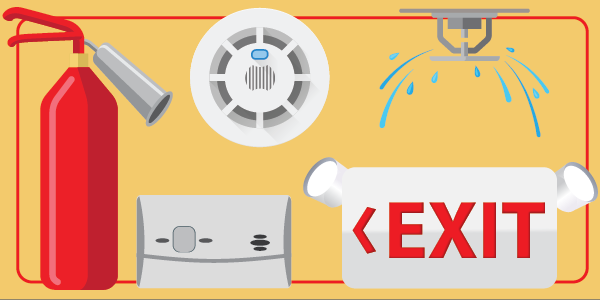Smoke Alarm
Are Your Apartments Protected from Fire and Smoke?
Think you can check off the box on fire safety because you have smoke alarms in your units? You might need to think again.
Smoke alarms are meant to make residents aware of a fire, so they can get out quickly. But if alarms are not the right type, placed in the wrong location or they are not working properly, then critical minutes could be lost with a delayed warning—if there is a warning at all.
Are Your Alarms The Right Type?
The type of alarm you need depends largely on the type of fire that may occur.
Fires typically start in one of two ways:
- A slow smoldering fire (such as a cigarette’s ash dropping and slowly catching something on fire) will usually create a lot of smoke as it begins.
- A fast flaming fire (such as a kitchen fire or a candle that catches other objects on fire) will create flames and heat immediately and there may be little or no visible smoke.
Types of Alarm
The invisible particles that are released into the air between the two types of fires are different too. This is why there are two types of smoke alarms:
- Photoelectric alarms use a light source to detect the invisible fire particles associated with slow smoldering fires sooner.
- Ionization alarms use an electric current to detect the invisible fire particles associated with fast flaming fires sooner.
While both alarm types will detect either type of fire, the speed at which they alert varies. As a result, the National Fire Protection Association (NFPA) recommends having both types of alarms or a combination alarm (that has both sensor types in one unit) installed, to help maximize the chances of escape in the case of a fire. This smoke alarm comparison table explains alarm types in greater detail.
Are Your Alarms Placed Correctly?
To be most efficient both in equipment cost and fire detection, the key is placing the right type of alarm in the right location. Because smoke in one area may not reach a smoke alarm in another, NFPA recommends placement of at least one smoke alarm in every bedroom, outside each sleeping area and, in multi-level units, at least one on each level.
In multi-family housing where open living concept spaces are prominent, a combination alarm (that has both ionization and photoelectric sensors) would be a good option when living, dining and kitchen spaces are all relatively small and connected as one room.
Do Your Alarms Work?
In multi-family housing, almost anything can happen to a perfectly good alarm that was installed correctly when the resident moved in—batteries can be removed, alarms taken down, covered or they could just cease to work. The only way to make sure an alarm works is to test it.
Testing
An easy way to make sure testing happens is to add it to your pre-scheduled preventative maintenance inspections. Follow the manufacturer’s instructions for testing the unit. This will likely be either:
- Pressing the test button to check that the battery is providing power
- Testing the unit with an aerosol smoke from a smoke detector test spray (Product available through Chadwell Supply Special Orders). If using this method, follow the instructions provided by the manufacturer of the aerosol.

Battery Replacement
If the battery is not the sealed 10-year battery type, make sure the batteries have been replaced in the last year. Even if the alarm tested fine; if batteries are older than one year, the risk is higher than the battery may fail, causing the alarm not to function in case of a fire. The expense of a battery is small compared to a delay in warning.
If the alarm does not function properly or has been tampered with or even removed, it’s time to replace it. There are many options available. Just make sure it is replaced with one that meets state and local requirements. The interactive map provided on kidde.com is helpful to determine compliance.
Completing the Checklist
While making sure the boxes are checked correctly doesn’t guarantee the property will be safe from fires, it certainly means everything has been done to minimize the effects in the event of a fire. For more information or additional resources Fire Safety for Multi-family Properties, visit NFPA.org or ask your Chadwell Supply Representative.
Calculate Your Savings
For a cost comparison switching from standard alarms to Worry-Free alarms, visit Kidde's Calculate Your Savings Tool.







